Estimated Read Time: 20 minutes
Does Nature Need Half?
How to best balance people and nature isn’t clear, but what is? The importance of getting the process right when trying to advocate for a better balance. But as former prime minister Kim Campbell says, “I think process is something that’s very hard to get people excited about.”
Very true. But even if the process doesn’t excite us, it matters, explains Kim Campbell.
“The substance – the outcome – is very much a reflection of the process.”
But don’t just take our former prime minister’s word for it.
Canada’s history is littered with ideas that received broad support and ideas that were met with fierce opposition; ideas that worked and ideas that didn’t. And very often, the outcomes – positive or negative – have been dictated by process.
To understand, let’s start here:
Southeast of Mount Robson, situated on the southeast and northeast borders of Jasper and Banff National Parks respectively, Bighorn Country is a key, unprotected wilderness that perfectly complements the Rocky Mountain Parks World Heritage Site.
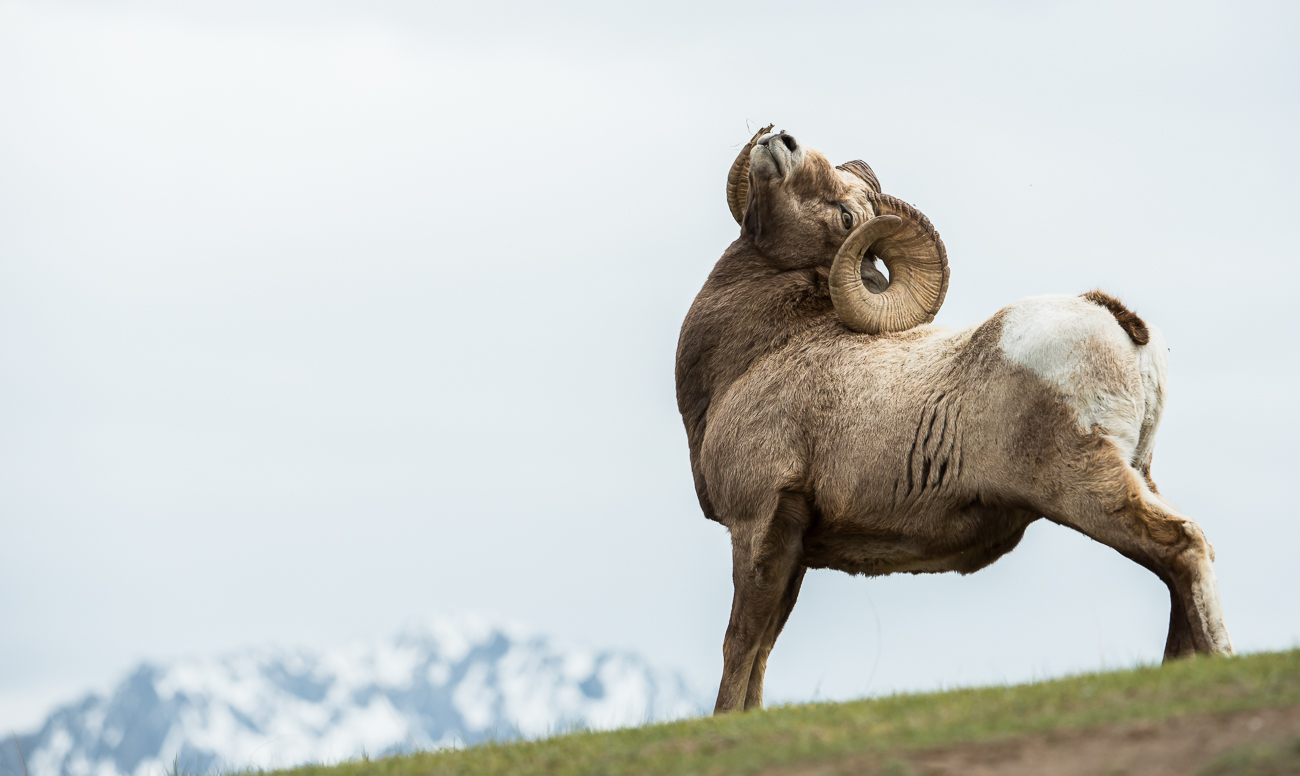 It’s home to bighorn sheep, obviously, but also transboundary populations of grizzlies and wolverines that matter to the entire region, Mount Robson included. What’s more, Bighorn Country is part of the North Saskatchewan River’s headwaters, supplying drinking water to Canada’s fifth-biggest city and numerous other communities and farms responsible for our food production.
It’s home to bighorn sheep, obviously, but also transboundary populations of grizzlies and wolverines that matter to the entire region, Mount Robson included. What’s more, Bighorn Country is part of the North Saskatchewan River’s headwaters, supplying drinking water to Canada’s fifth-biggest city and numerous other communities and farms responsible for our food production.
At the request of environmental organizations – including the Yellowstone to Yukon Initiative – the then NDP Alberta government first proposed protecting the landscape in 2018. And though they temporarily succeeded, when a new provincial government came to power in 2019 – the United Conservative Party – the Bighorn Country plan was scrapped.
As a consequence, the proposal has now become a political football – one that will always be up for debate. Or, in other words, for both the proponents and the opponents of the plan, victory will likely always be elusive.
How did we get here? Process, of course.
From the outset, too few felt their voices were heard in the decision-making process and even though opposition to the park plan was a minority view in Alberta, it was well-organized, vocal and politically active in ridings that determined elections.
As Josh Hall tells us, “it’s the people who are in the rural areas closer to the mountains and to Bighorn Country that are actually speaking up more. They know. They have a stake in what’s going to happen there.”
Josh is a journalist in Red Deer, Alberta – downstream from Bighorn Country. He covered this story extensively, and as Josh explains, this issue became divisive when some citizens felt their voice wasn’t being heard in the park proposal process.
“Certainly, when you look to the politicians in Edmonton, they probably could have taken the thoughts of rural residents a little more seriously.”
And before you think this is simply a case of urban politicians neglecting rural voters, Josh tells us that once the government changed in Edmonton, the reverse happened. That, says Josh, is what makes this story so frustrating: What could have been a win-win has become a lose-lose.
“This has been a thing for decades with pipelines and forestry issues. Whenever a new thing comes up, it’s combativeness.”
Combativeness is, of course, in the eye of the beholder – few on either side of this issue believe they contributed to the problem. But Josh says both sides dug their heals in and created little room for relationships to be forged with their opposition.
Josh says for processes to yield positive outcomes, what must be remembered is that “so many people are so set in their ways and their opinions. They literally don’t take any time whatsoever to ask questions of the other side and why the other side feels the way that they do. Open-mindedness is what it needs to be.”
Ken Wu is an environmental advocate and agrees with Josh’s assessment. Ken believes Bighorn Country failed because its champions didn’t build enough alliances.
“The outdoor recreation clubs, including some of the fish and game clubs, those type of alliances – had they been built earlier – could have swung a whole lot of people who have a real ethic for nature and ecosystems to come on board.”
But that didn’t happen. The consequence? Ken says, “communities are whipped up into a mob of opponents where there’s not much space to think rationally in some cases.”
And now Ken believes the issue is doomed to the whims of election cycles.
“The campaign is so far along it’s hard to swing around.”
Josh Hall agrees and says that’s why we must do a better job of listening to minority voices – and that includes rural voices.
“It’s definitely important to listen to people in rural areas in terms of what they have to say about the environment.”
After all, as Garett Schmidt of the Alberta Off-Highway Vehicle Association told an anti-Bighorn Country rally, as reported by Red Deer Express:
“We have almost every single municipality, town, county, First Nations, recreational groups, and those that live off that landscape, including outfitters and guides and trappers. Every one of them is opposed [to Bighorn Country] – not to the preservation of our landscape – but to this process and the way you all are being treated.”
In other words, according to Schmidt, a better process that respected rural views may have yielded a better result for the Bighorn Proposal.
But Josh Hall says rural and recreational advocates also need to work harder to understand why scientists, conservationists and, often, urbanites support park proposals like the Bighorn.
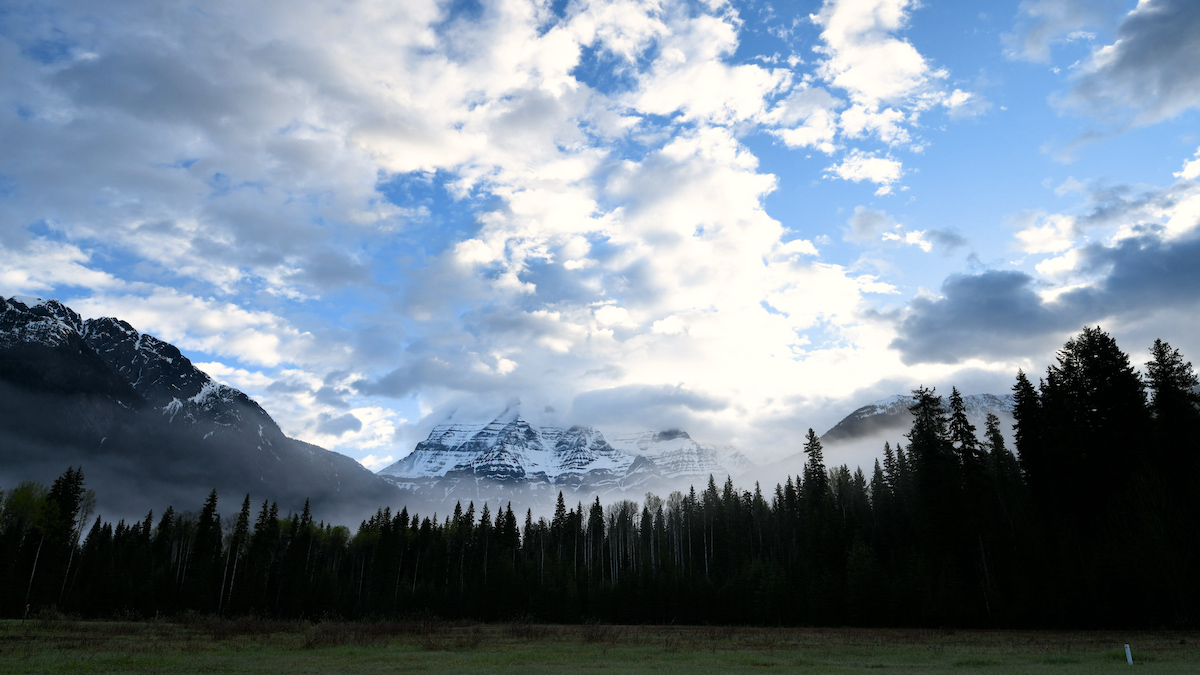 After all, Josh says, “the Earth is going to need to be here for generations and generations, or we’re all gonna die out.”
After all, Josh says, “the Earth is going to need to be here for generations and generations, or we’re all gonna die out.”
Which begs the question, can we move beyond combativeness and find a process that actually works for everyone when it comes to balancing people and nature?
Donna Kennedy-Glans answers: “How can we not?”
Donna is a former conservative Alberta cabinet minister and headed up the Alberta Fair Deal panel – a government-driven consultation process that sought to hear why so many feel left out of government decisions.
“You do have to understand what motivates somebody. Why do they feel that way?”
Donna adds, “I need to know how to engage with those people in a way that isn’t just placating them or going, oh, you know, I agree with you. Because I don’t agree with them on everything.”
How to do that? Donna says listen and then find a way to transcend either/or solutions.
“There’s a point to that person who doesn’t like natural gas. There is a point to that person who’s saying I want to keep business thriving. I’m saying I’m not going to pick one or the other. I want both perspectives to show up in a strategy that transcends and includes both of those ideas.”
It’s possible that a better process – one that got creative and helped differing perspectives see themselves in the outcome – might have yielded a different result for Bighorn Country.
It’s also possible that a better process wouldn’t have mattered – would only have led to a compromise solution that wouldn’t have gone far enough, fast enough, for enough people on either side of this issue.
It’s the 21st Century paradox, and it’s why Donna reminds us: “If you’re going to come up with solutions about how to make your parks better, it means you have to really understand the detail and the complexity and the options. If you take one option off a table, what does that mean for something else? So, it’s not a give and take, but it’s a better than, it’s a more than.”
Donna believes our biggest challenge – our most important endeavour – is creating a better process that overcomes feelings of disenfranchisement and allows for creative solutions to old problems.
“Coming to some reconciliation of what that can look like in a place like Alberta, I think is a lot of work, and it changes [all the time]. I think figuring out how to get people’s voices heard and understood on those kinds of things is an imperative. It’s our imperative. It’s what we have to learn to do better.”
It’s not mission impossible because there are examples of processes that have worked. Don’t believe me?
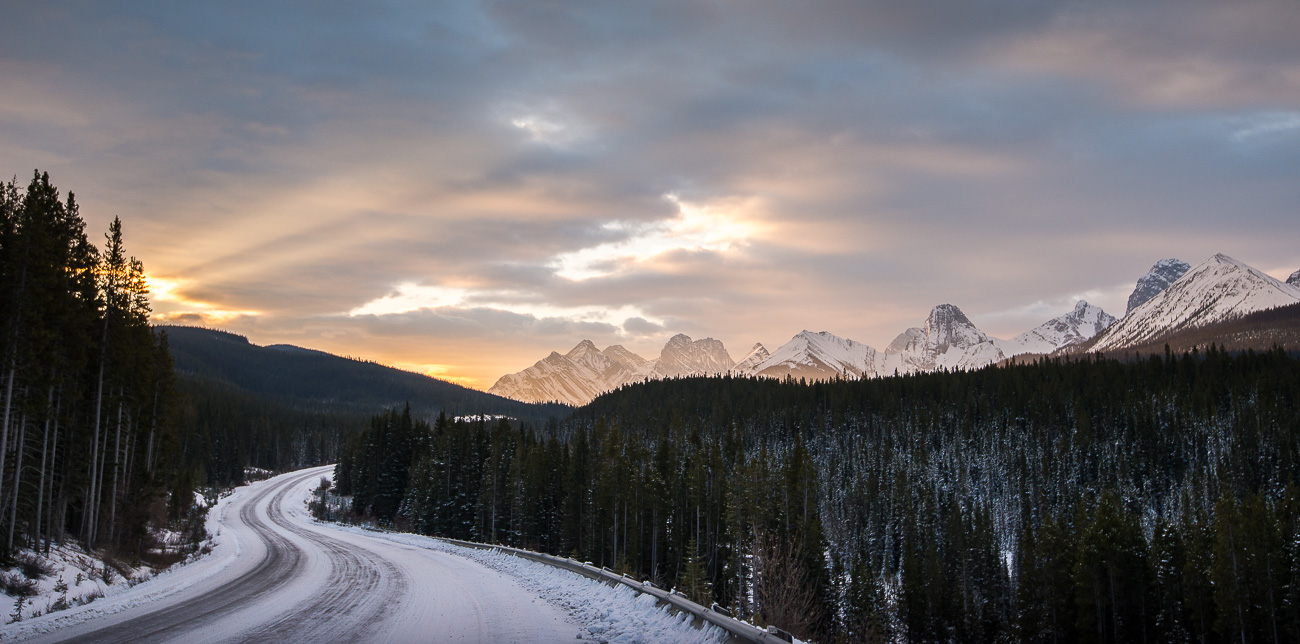 Just look a bit further south along the eastern slopes of the Rocky Mountains to Kananaskis Country – a large, multi-use wilderness south of the Bighorn, southeast of Banff National Park and west of the city of Calgary.
Just look a bit further south along the eastern slopes of the Rocky Mountains to Kananaskis Country – a large, multi-use wilderness south of the Bighorn, southeast of Banff National Park and west of the city of Calgary.
It’s a place that Dr. Stephen Herrero says “is doing it the right way.”
Stephen is the Jane Goodall of grizzly bears – he’s the scientist that led some of the first and most important research into the lives of grizzlies. He wrote the book, literally, on how to safely live and travel in grizzly country.
“The main misconception that society has about bears is that they’re too dangerous to live with. They’re too dangerous to live with only if you act out of ignorance.”
Stephen’s worked tirelessly to remove ignorance from the equation and focused heavily on the eastern slopes of the Canadian Rockies – in places like Bighorn and Kananaskis Country. He understands the challenge of asking those who live on the landscape to coexist with grizzlies.
“To coexist with animals like grizzlies, you need to be able to work with ranchers, for sure, and work with grizzly bears, for sure, but it’s an ever-changing dynamic.”
But Stephen believes it’s “a challenge to be worked with.”
And it’s not mission impossible either, Stephen tells us. Look no further than Kananaskis.
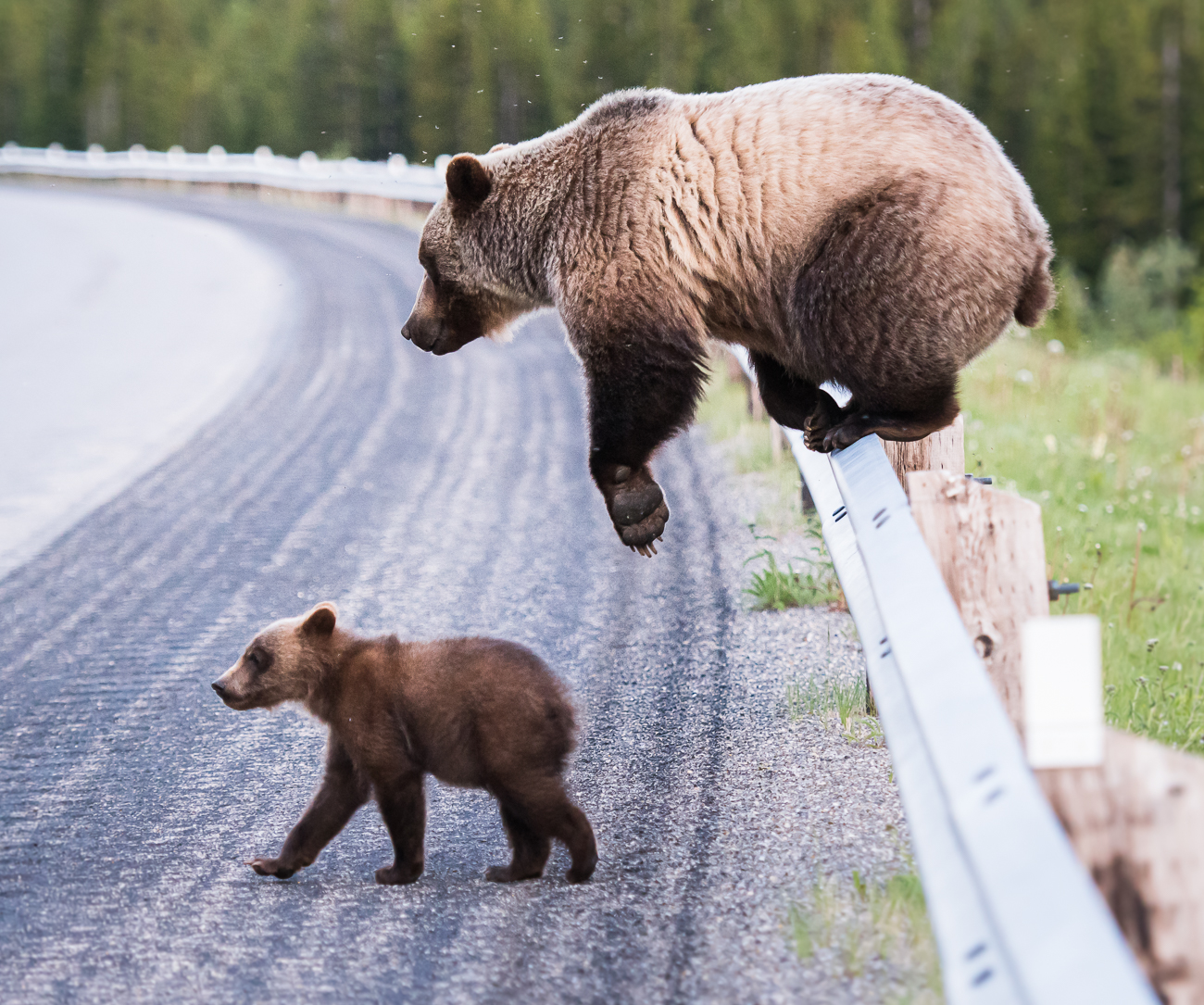 “I think we’re…coexisting with bears [in Kananaskis] by virtue of understanding their need, spending the money it takes to interface people’s needs and desires with grizzly bears.”
“I think we’re…coexisting with bears [in Kananaskis] by virtue of understanding their need, spending the money it takes to interface people’s needs and desires with grizzly bears.”
Kananaskis Country, in many ways, is the mirror of Bighorn Country. Kananaskis is also a critical headwater, helping supply Calgary’s drinking water. It provides critical connective habitat for transboundary wildlife populations that drive the ecosystem services of the Rocky Mountain Parks World Heritage Site. And Kananaskis has long been known for its recreational and economic values.
Yet Kananaskis succeeded where the Bighorn proposal failed.
The government of the day that created Kananaskis – Peter Lougheed’s Progressive Conservatives of the 70s and early 80s – consulted widely and created spaces where nature could come first and places where people could come first, allowing areas to be opened to logging, biking, hunting and ATV use.
And though there are those who believe Kananaskis hasn’t done enough to protect nature, or those who believe it’s had limited recreational and economics opportunities, there’s no denying that it’s been a net positive for nature and the economy.
Stephen Herrero adds, “Kananaskis is managing a selective area where it’s not healthy for grizzly bears to be, and they’ve been very successful at that. They’ve had very, very few bear grizzly bears removed [killed], and they’ve had some very rich viewing opportunities where people stay in their cars and don’t go too close.”
More importantly, Kananaskis has survived the ebbs and flows of politics – changing governments and changing priorities. In other words, the current protections for Kananaskis are no longer up for debate. It’s beloved by almost every Albertan, and even for those who don’t love it, they don’t oppose it. Unlike the failed Bighorn Country proposal.
Sam Sullivan, the former mayor of Vancouver and a former BC cabinet minister, says these outcomes happen “with public education, public awareness, consensus building. [When people] help identify who’s getting hurt – or who thinks they’re going to get hurt – and make sure that everybody understands what’s being done, what’s being proposed.”
Sam adds that it helps more people “feel comfortable that this is a good thing ultimately for the whole community.”
And when that happens, Sam tells us, ideas get multi-partisan or cross-party support.
“Then what you’re going to avoid is that the next government will try to undo that. If it’s come truly as a widely supported bill, then you won’t have this threat.”
Ken Wu agrees.
“The environmental movement needs to expand significantly into building allies with non-so-called non-traditional allies.”
Before launching the Endangered Ecosystem Alliance, Ken was focused on protecting primary forests. But when his boots hit the ground on southern Vancouver Island, he found local opposition to his proposals to protect the trees.
Rather than allow a confrontational relationship to grow, Ken listened to what the local communities wanted: Business opportunities.
“We basically drove a huge number of people into the businesses in that area as they came out to see the old-growth forest. As the money poured into their businesses, they started taking stances in favour of protecting old-growth forests. Now, not everybody was an environmentalist among those businesses, but over time – because they supported it due to business – they learned more, they listened more.”
Ken also listened and learned, as you now know, that not every rural resource community is looking for business opportunities – they’re also looking to protect their way of life and culture.
Ken worked with communities to understand their concerns and then worked to find issues of commonality: Like raw log exports.
Some argue that when we export logs, we’re also exporting valuable milling jobs. Ken’s solution?
“We said that if you’re going cut the trees, you gotta process them here. That solidarity [with loggers] slowly opened the door for them to eventually take a stance to save old-growth forests. So, now we’ve got thousands of forest workers saying: ‘end old-growth logging, save the old-growth.’ And that was largely out of an alliance that we made with them. And again, over time people start listening and learning and exploring new things, just like we learned a lot more about the industry and about their situation.”
Ken answers your inevitable question:
“What’s the point of doing all that? It’s because, with the greater social breadth, you also have greater political strength to change the outcome, to change the laws. Because it just takes people power and a lot of different kinds of people.”
Ken’s right.
No matter where you stand – no matter your vision – good ideas become reality when diverse people rally together.
As Nancy Newhouse says, “I don’t think there’s a single person that doesn’t, at some level, care about at least aspects of nature. And once you find that common ground, you share more stories and understanding.”
Nancy is a biologist and the Vice President of the Nature Conservancy of Canada. And more than almost any conservation organization in Canada, Nancy and the Nature Conservancy have been able to build bridges across divides. What’s their secret?
“I think part of it’s that we focus on collaboration, and part of it’s that we focus on bringing uncommon allies together. So, we work with everybody. We try to find ways that are win-wins for everybody that might be involved in any kind of land use discussion.”
And it’s especially important to create wins when the goal is conserving private land.
You see, even though most of Canada is Crown or public land, considerable landscape is privately owned and in need of protection. And that’s where Nancy and the Nature Conservancy come in.
“The fact is that you end up with private land as being some of the most productive wildlife habitat in Canada because we are an animal, and we like the same types of things that wildlife would look for.”
Science obviously helps Nancy identify what areas need protection, but it’s economics that ultimately seals the deal. Does that give Nancy an advantage in generating wins for people and nature?
“That’s a huge asset, to be able to use a market-based approach. Money is the one thing that’s a common denominator. It’s not the only thing though. And so, I think without all the other elements of being able to bring people together, really listening to what their interests and concerns are, we wouldn’t be able to get [results].”
In other words, the Nature Conservancy model doesn’t require perfect political circumstances to get results, but as you heard, good process still matters to all outcomes.
For Nancy, that means “it’s about not villainizing anybody. It’s about listening to their story and understanding where they’re coming from and trying to find that common ground of what can we do to work together towards a solution.”
The alternative never works, according to Nancy. She says the conversation can never be “you are wrong, I’m right. This is the only way it’s going to go. It’s about sitting down, ideally one-on-one, having a conversation.”
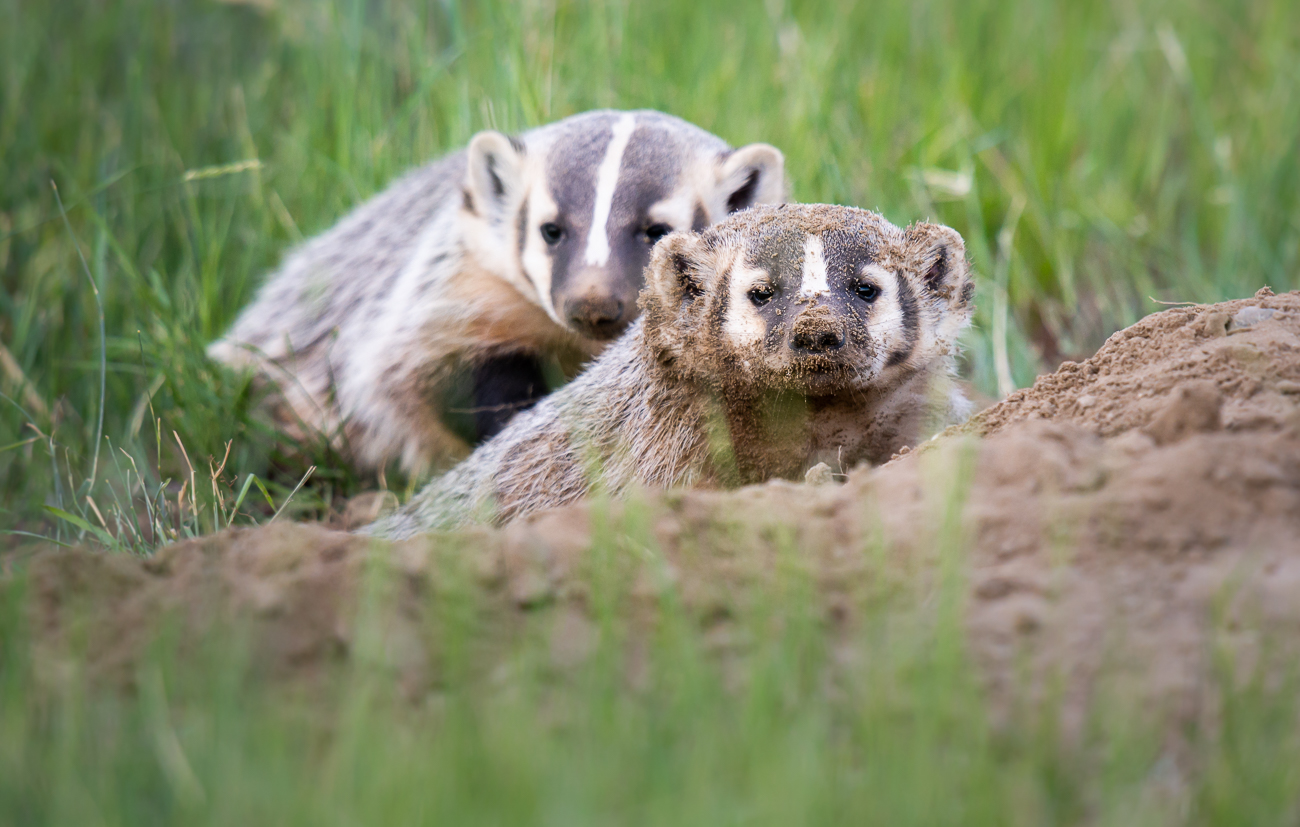 Nancy’s focus on cultivating relationships has helped create new protected areas, but it’s also been instrumental in creating a community-driven effort to protect one of Canada’s most endangered animals – the Jefferson badger. Her success?
Nancy’s focus on cultivating relationships has helped create new protected areas, but it’s also been instrumental in creating a community-driven effort to protect one of Canada’s most endangered animals – the Jefferson badger. Her success?
“Part of it is making sure that people understand what the ecology of the animal is and what it’s actually doing out there. Part of it is how to work with people that are working the land so that we can continue to live with nature, which we need to do.”
This subspecies of badger was once found in Mount Robson and today is limited to a small corner of southwestern BC. And though there are many reasons for its decline, to prevent the Jefferson badger from going extinct, people need to learn to coexist with them – even when they’re an inconvenience.
“We worked with golf courses, and they went from thinking this is awful that they had badgers on their course to being quite pleased. And they put up a sign, and they told their golfers: ‘This is an endangered species. This is something that’s really an amazing opportunity for you to see as you’re out there.’”
It’s a success story Nancy’s learned from, and it’s one she hopes we all learn from.
“And, ultimately, I think it’s about figuring out what values there are for people. We know there’s common values. People love their family. They need food sources. They need to be able to drink fresh water. And when you can recognize that everyone holds that in common and that people are not evil inherently because they’re working with an oil company or doing some timber harvesting? That they’re trying to make a living? [Then we see] that they can be deeply concerned about the future for their own children and about the wildlife that they love.”
Which is why Nancy says the most important skills needed to solve this question and others like it aren’t always the ones we might assume.
“I think some of the most useful learning is Philosophy and Religious Studies because that’s what drives decision-making.”
BC Wildlife Federation’s Neil Fletcher agrees, adding, “being a good writer and a good communicator – doesn’t matter what you do in your life – those two things by themselves are so important in any position you do.”
It’s a skill that Neil believes we must have in order to find better ways to work together with those we disagree with.
“We need to be finding solutions where we can work together and put those little issues aside. Focus on the big issue and take your position out of it.”
Humane Canada’s Barbara Cartwright concurs we need to work together – including with animals; inclusive of considering the welfare of animals.
“What can we do to ensure that the animal is having a good experience of its own life? It’s simple. And we should be having that in our food policies. We should be having that in our criminal law policies. We should be having it in our environmental policies. But it’s not a question we ask very often. In fact, we rarely ask it at all.”
And remember, Barbara says, don’t assume you know who will and won’t support an issue you care about.
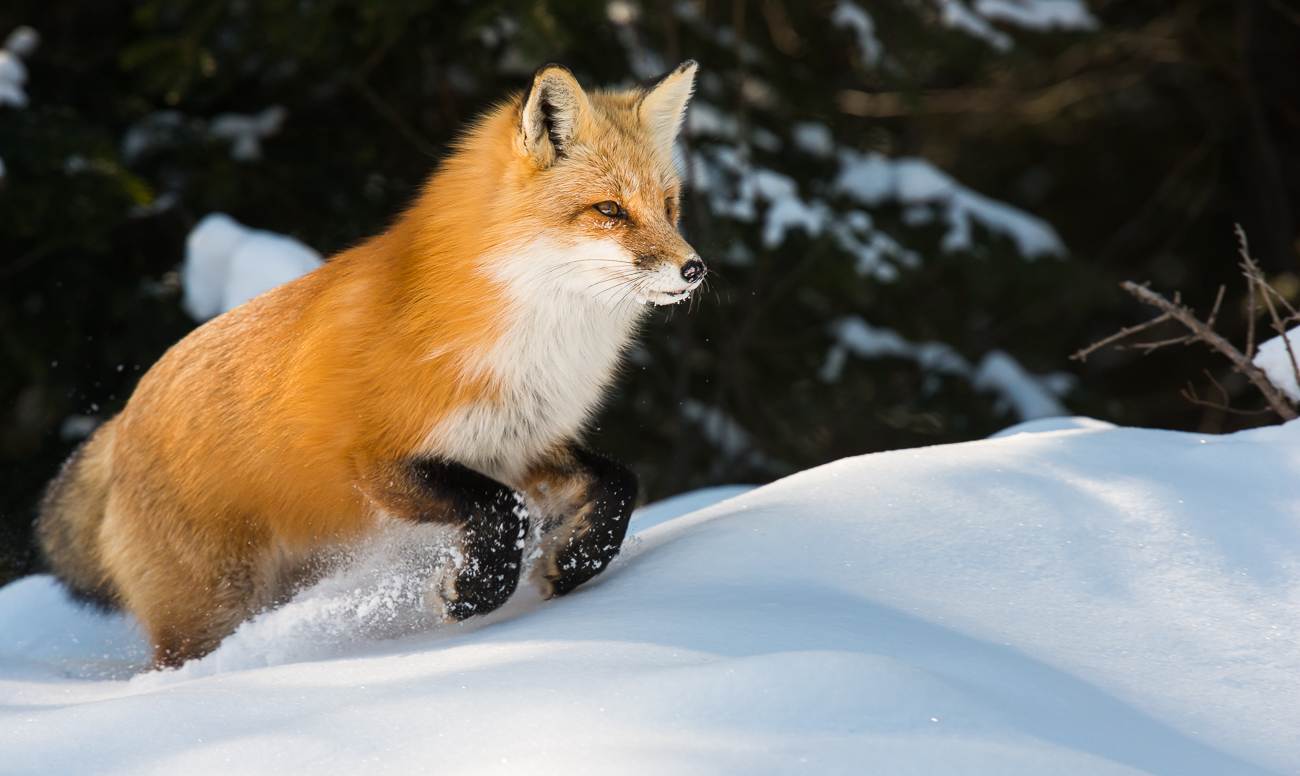 “And this idea that somehow conservatives don’t care about animals has not been my experience at all. In fact, we’ve seen most of our major leaps forward in animal welfare policy coming from conservative regimes.”
“And this idea that somehow conservatives don’t care about animals has not been my experience at all. In fact, we’ve seen most of our major leaps forward in animal welfare policy coming from conservative regimes.”
Former Alberta cabinet minister Donna Kennedy-Glans agrees we can’t assume what someone – anyone – thinks about any given issue.
“I am small ‘c’ conservative. I was raised in a traditional setting, so I have these values, but I also have lots of other values that aren’t conservative. So, let me decide about me.”
Don’t put hunting advocate Neil Fletcher in a box either.
“Full disclosure, I’m actually a vegetarian.”
Maybe that surprises you. Maybe this from compassionate conservation advocate Dr. Shelley Alexander might surprise you.
“There are ethical principles around hunting. A vegetarian based diet? If anybody spent any time in a prairie system? Animals die. Animals are displaced. There is no clean way through any of these decisions.”
That’s why Anthony – an engineer and Twitter’s Thankful Outdoorsman – says good process, good ideas, and good solutions always move beyond assumptions.
“When you hear something – if you hear somebody say they’re a hunter – don’t think trophy hunting. Don’t make the judgment. Ask questions. Be open-minded. And I think if people are, then people will learn. But if people are one-sided and very blinded, they shut down, and it’s ‘my way or no way’, and that’s a problem.”
Which might be the most important point of all.
Every human is different. Every community is different. Every group of peoples are different.
When we speak for or assume that subtle differences don’t exist, we do a disservice to our democracy and the ideals we stand for. We lose our ability to think critically. We can’t act creatively. We get locked into paradigms stale and failed.
And maybe turning the kaleidoscope will help. Maybe changing the dynamics of a decision-making axis from economy versus environment to culture or development will help us gain a new appreciation for those we disagree with – help us better separate what we need from what we want.
Or not.
But if we fail to be truly honest about our problems and the diversity of opinions, we render every debate stupid – and simplicity is where good ideas – good process – go to die.
Which is why we need to be reminded of this point made by BC’s former Lieutenant Governor, Janet Austin:
“So often have the expectation that there are simple answers to really complex problems. For every complex problem there is a simple, wrong solution.”
And that’s why it’s too late in the game to simply stand against something.
What matters now is standing for something.
Right, journalist Dawna Friesen?
“What I’m looking for now are those people who are not just saying, ‘we need change, and we should listen to young people’, but are coming up with ideas and theories about how to bridge that divide between all the adults talking and the children who are saying ‘enough talk.’”
And, indeed, Harvey Locke is coming up with bold ideas for action.
If you agree with his Nature Needs Half proposal? Fantastic. Add your voice.
“It’s intended to be a movement that everyone can participate in, not one that anybody sits on top of and sends lightning bolts off about what you should do and what you shouldn’t do. It says: ‘This is what we need to do. Let’s figure out how we can do it together as a global community.’”
If you disagree with Nature Needs Half? Awesome. Make your voice heard by suggesting something better.
“If it’s not right, tell me what is right.”
But don’t simply oppose the idea because you don’t like it.
As Harvey says, “it’s time for us to become wise and think together about how we can make the world work, given what we’ve done to it, given our capacity and given what we know. We can’t stick our heads in the sand and say it can’t be done for this reason, can’t be done for that reason. Move ahead, not behind. Don’t be looking for a hundred critiques; look for solutions to the challenges that we all face.”
In other words, disagree by unleashing your creativity and the next, better idea.
Because, remember, we need your creativity. We need you to contribute your ideas and perspectives – your passions and your skills – to the problems at hand so we can find the better answers.
As Harvey argues: “None of us knows exactly how change is made – at any scale, by anyone, anywhere – but we do know that nothing changes if no one tries.”
True. Nothing changes when we don’t make our voices heard, and everything can change when we do.
So, heed these words from our former prime minister Kim Campbell:
“Go for it.”
Indeed.
After all, this story doesn’t have an end because we haven’t written the final chapter; we haven’t settled on our chosen course or the proper solution to this question we’ve been debating: Does nature need half?
That will be up to you.
And who knows what your answer will mean for Mount Robson’s future, for Canada’s future, for our collective future. But we’ll never know if you don’t choose hope over despair, if you don’t choose acting over wishing.

Think about it.
Mount Robson Provincial Park isn’t perfect. It’s still missing species that once called it home. It’s still struggling to balance people and nature, even within a space designated for nature. It’s still working to build its relationship with its neighbours and repair its relationship with its former stewards.
As Mount Robson’s Elliott Ingles says, “We’ll strengthen that relationship, and we’ll just keep moving forward.”
This is important; as Elliott adds, it’s a place that matters.
“Mount Robson is such a special place to focus on.”
And trying for better, here or anywhere, is not only possible but important. After all, Elliott tells us, “we’re at the beginning. We’re at the beginning of the trail to a long road.”
Yet no matter how long or hard the road ahead might be, Elliott and his team have never quit – never stopped working for that better tomorrow.
And, ultimately, that’s all we can ask: To demand better of ourselves, of each other, of our communities, and of our world.
Demand better and try hard to do better: Make better decisions, be more thoughtful citizens and work together – in hard times and good, with those we love and with those we hate – to create better.
For people.
For nature.
For all.
Today, tomorrow and for generations to come.
It might seem impossible. But it’s not.
After all, this story is the real-world application of everything you’ve learned in this class. You now have the tools – and we already know you have the creativity.
The answer to this problem is where politics and society meet biodiversity and science. It’s where economics and careers meet research and experience. It’s the basis for our art, the springboard for our stories.
This question? Does nature need half? It’s not a challenge for Harvey Locke or Hal Kvisle, or Chloe Dragon Smith. Nor is it one for Nancy Newhouse or Cyril Kormos, or Forests Ontario.
Answering this question? It’s your opportunity to do your part, in ways big and small, now and in the future, to author your story – and ours – in ways no one has previously imagined.
In other words, the answers? The right answers? The better answers? They’re in you.
Time to find yours and share them with the world.
Your time is now.
Task
What do you think?
Referenced Resources
* Quotes have been edited for brevity and clarity.